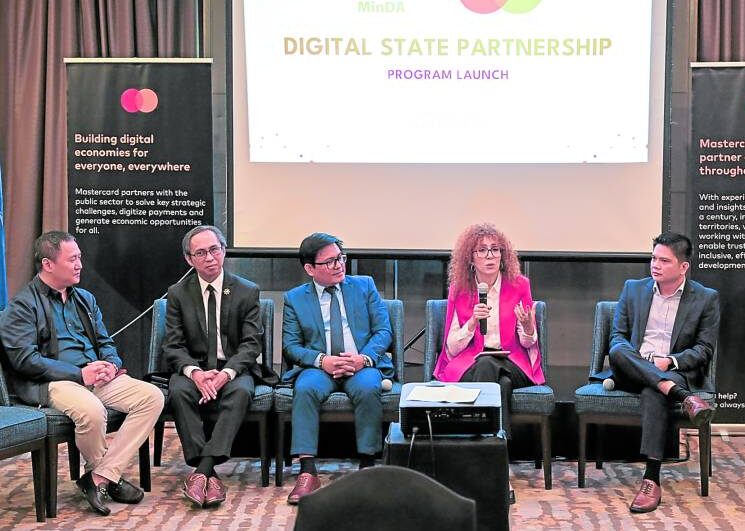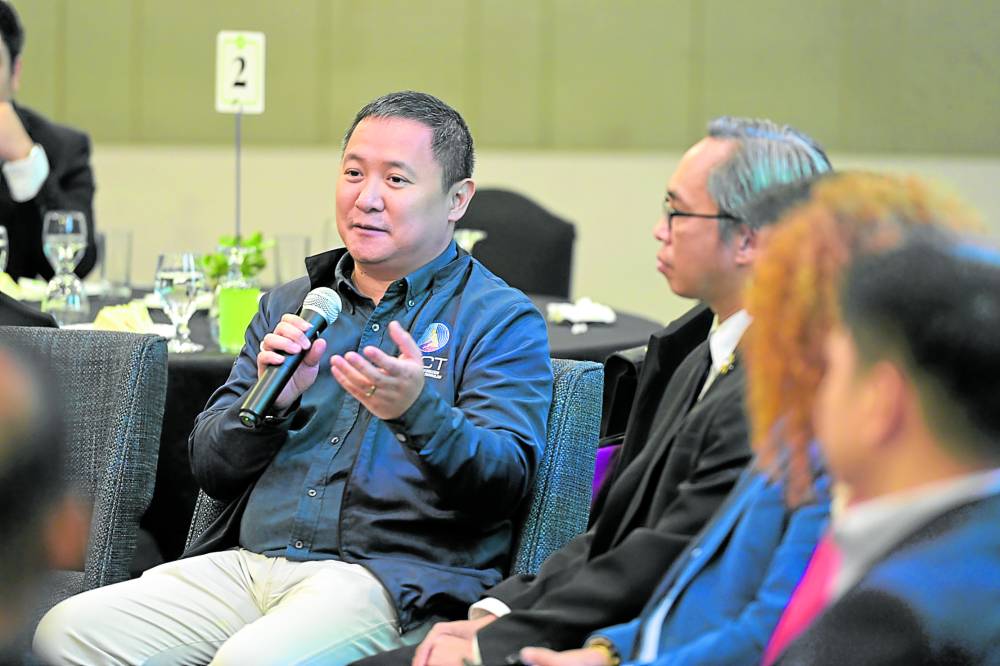Mindanao aims to ride wave of digitalization

TECH FOR ALL (from left) DICT Undersecretary Jeffrey Dy; Pierre Tito Galla, cybersecurity lead for USAID Beacon; Romeo Montenegro, executive director of MinDA; Gamze Yurttutan, vice president of Mastercard and Marc Talagtag, head of information and technology group of DTI —contributed photos
Digitalization will empower micro, small and medium-sized entrepreneurs (MSMEs) in Mindanao to deliver more value to their customers and help foster inclusive growth.
Even farmers, fisherfolk and market vendors can benefit once equipped with right set of tools and knowledge to harness the power of technology.
This is the goal laid out by Mindanao Development Authority (MinDA) and Mastercard as they agreed to work together to improve access to digitalization. Their project, which was launched last Jan. 18, also delves into cybersecurity data analytics, technology innovation and integration of digital technologies for MSMEs.
“This venture is another welcome development to place Mindanao and the entire country on an elevated platform for innovation and technological development and not only to improve business and industry processes but also the overall quality of life,” says Maria Belen Acosta, chair of MinDA, a government agency mandated to promote, coordinate, integrate and implement programs in Mindanao.
Simon Calasanz, country manager of Mastercard Philippines, says that the pilot phase of digital ecosystem deployment will begin in Davao and Cagayan de Oro. “We believe in the transformative power of technology to create positive change. Our aim is to grow contactless payments for both private and public entities in Mindanao, bringing greater ease and convenience to the payment experience,” he adds.
But first, there is a need to build more internet infrastructure. “That would be the basic platform for all these digital innovations. Because if there is no connection in the first place, then that would be an almost impossible task,” Acosta says.
Since the Department of Information and Communication Technology (DICT) is involved too, Acosta believes that even the farthest island in the archipelago can be served.
“Even the ordinary vendors and our Muslim brothers and sisters, our indigenous peoples in Mindanao can avail of this technology,” she says.

POLICY VIEW Jeffrey Ian Dy, DICT undersecretary for connectivity, cybersecurity and upskilling —CONTRIBUTED PHOTO
Underserved
Data from the Philippine Statistics Authority show that more than 50 million people in the country have access to the internet. But Jeffrey Ian Dy, DICT undersecretary for connectivity, cybersecurity and upskilling, notes that when it comes to Mindanao, the numbers are significantly lower.
Zamboanga Peninsula has the lowest proportion of households with internet at 28.5 percent, while the Bangsamoro Autonomous Region in Muslim Mindanao has the lowest ratio at 1.7 percent.
Dy says the DICT continues to align programs that will benefit the public, especially MSMEs, whose contribution to the economy cannot be played down.
“Our major programs and projects support the development of of MSMES in the country, such as the national broadband program [and] the free public internet access program, which provides a needed infrastructure for reliable internet in the country as well as help facilitate Philippine digitalization,” he says.
Trust in technology
Mastercard Philippines underscores the importance of trust in technology to deliver critical transactions such as digital payments, payroll, savings and access to credit. As the contactless payment technology penetration continues to increase, Mastercard wants people in far-flung regions to also benefit from these initiatives.
“Our involvement goes beyond mere transactions. It extends to providing targeted and efficient access to financial aid and social payments in forming program and policy creation through data insights and offering cybersecurity and fraud assistance,” says Calasanz.
Mitigation of cyberthreats to MSMEs ranks high on the list of the DICT. According to a 2022 Cybersecurity Ventures report, more than half of cyberattacks targeted MSMEs and 60 percent closed shop within six months after their systems had been hacked.
For its part, the DICT encourages local and international collaborations for knowledge sharing, capacity building and cyberhygiene training.
A Digital Transformation Center Innovation Hub is also offered for free. “It is an office type structure that provides internet connectivity, co-working spaces and office services,” he adds.
Dy says that the DICT also offers digital jobs, trainings on how to use free web development tools and how to build a website for entrepreneurs and nontechies.
Digitalizing agri
However, there is a need to prepare MSMEs—especially those living in rural areas—to seamlessly adapt to the digital shift. The government partnered with the US Agency for International Development (USAID) to develop “a robust, secure and resilient digital economy” through the Speed (Strengthening private enterprises for the digital economy) Project.
In a report, the USAID Speed says that most MSMEs still prefer cash and view online payment solutions as an unnecessary additional cost.
“We have to incentivize them to adopt these different tools so that they can start developing the habit of using it,” says Jerome Locson, e-commerce ecosystem specialist of USAID Speed.
Romeo Montenegro, assistant secretary and deputy executive director at MinDA, hopes that through digitalization, additional resources will be aligned to develop the agribusiness sector of Mindanao.
The agriculture sector remains a bright spot for the region. However, Montenegro laments that despite the soaring export numbers and a slew of high-value crops, eight of the poorest provinces are located in Mindanao.
“It only goes to show that when you have a production that is not linked to the value chain…the level of income of the farmers is just subsistence. We are at the mercy of the traders and middlemen because there is no effort by which they are directly linked to the market or the value adding and processing,” he adds.
He views the partnership with Mastercard Philippines as a “providential sign” toward the establishment of a “dynamic and globally connected innovation ecosystem.”
“All of this is definitely going to be tough, difficult [and] challenging. But if we work together as one, it’s possible,” says Montenegro.
